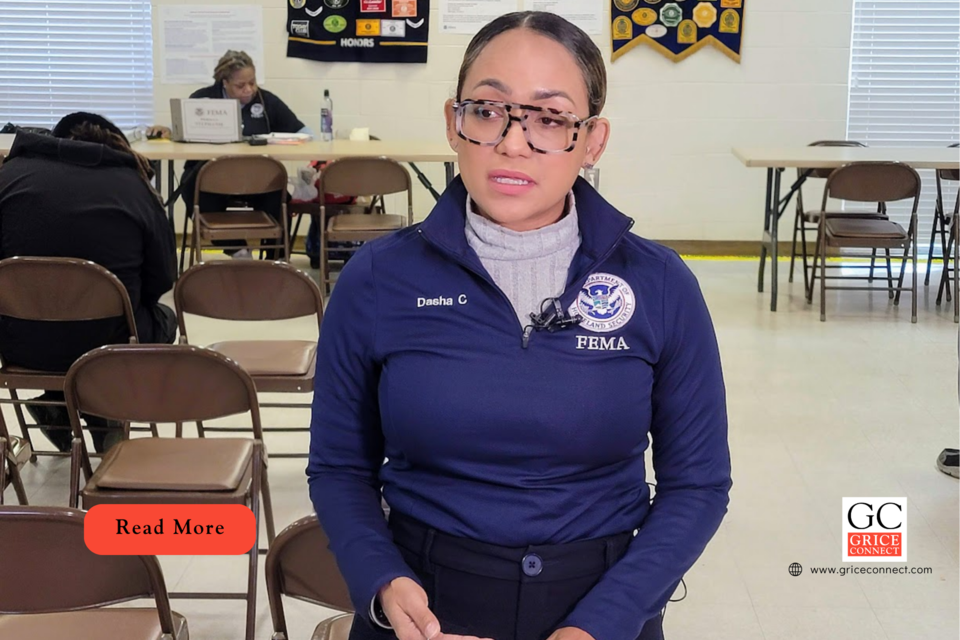NOTE: As of December 26, 2024, FEMA has extended the application deadline to February 7, 2025.
Bulloch County and area residents affected by Hurricane Helene and Tropical Storm Debby are being urged to complete their FEMA disaster assistance applications ahead of the February 7, 2025, deadline. Representatives from FEMA and the Small Business Administration (SBA) have set up a temporary mobile Disaster Recovery Center at the Kiwanis Fairgrounds in Statesboro, providing in-person assistance to those navigating the application process.
Dasha Castillo, a FEMA spokesperson, highlighted the importance of completing applications and ensuring all necessary steps, including inspections, are finalized. “Inspections are tied directly to registration,” Castillo explained. “If you’ve reported damage but haven’t requested an inspection by the deadline, you may miss out entirely.” FEMA reports a significant gap between the number of residents who have initiated contact and those who have completed requests for inspections.
The temporary Disaster Recovery Center is open Monday through Saturday, from 8 a.m. to 7 p.m., offering extended hours to accommodate as many people as possible. The center will be closed for holiday observances on December 24-26 and December 31- January 2. FEMA encourages residents to visit in person to address issues with incomplete applications, ask questions, or appeal decisions.
How the FEMA Process Works
The FEMA application process involves several steps. Once registered, an inspector is assigned to assess the reported damages. Inspections are free and are critical to determining eligibility and the amount of assistance a resident may qualify for. Castillo cautioned residents against delaying this step, noting that failure to request or complete an inspection by January 7 could result in a closed case.
Castillo also addressed confusion about the types of assistance available. FEMA offers grants for home repairs, rental assistance, and other disaster-related needs. Assistance isn’t limited to the commonly known $750 for immediate needs. For instance, if residents were displaced and stayed in hotels, or incurred costs for home repairs not covered by insurance, they may be eligible for reimbursement. Renters are also eligible for assistance to replace damaged belongings such as furniture and appliances.
What You’ll Need
To complete your FEMA application, make sure to have:
- A current phone number where you can be reached.
- Your Social Security number.
- Proof of the damaged property’s address and your current address.
- A general list of damages.
- Banking information for direct deposit.
- Insurance information, including your policy number and contact details for your provider.
For those who have already started the process, Castillo emphasized the importance of following up. “Pending documentation is one of the most common issues we’re seeing,” she said. “Many cases are stalled simply because applicants don’t realize they need to submit additional information.”
Addressing Denials and Appeals
If you’ve received a letter from FEMA stating you’re ineligible for assistance, it’s not necessarily the end of the road. Castillo explained that many ineligibility determinations are the result of incomplete applications or missing documents. Residents have the right to appeal these decisions and provide the necessary information.
To appeal, residents should:
- Submit receipts, repair estimates, or other relevant documents.
- Ensure documents include the FEMA application number, disaster number, and contact information.
Appeals can be submitted online, mailed, faxed, or brought to the Disaster Recovery Center.
Challenges and Observations
One notable concern raised during FEMA’s review of cases is the lack of total loss claims. Despite evidence of completely destroyed properties in the community, no claims for total loss have been filed. This discrepancy highlights potential miscommunication or gaps in understanding about eligibility. “We know there are total losses out there,” Castillo noted. “It’s vital to ensure that the information residents receive is clear and actionable.”
Another challenge is the sheer volume of information provided to disaster survivors, which can be overwhelming and lead to confusion. FEMA is working to simplify key messages, focusing on critical deadlines and steps. Castillo encouraged residents to take advantage of resources like the FEMA app and the disasterassistance.gov website to track their cases and ensure nothing is missed.
Final Reminders
With the January 7 deadline approaching, FEMA is urging residents to act now. Even if you’ve received some assistance or believe you may not qualify, it’s worth visiting the Disaster Recovery Center to explore additional options. “The funds are available, and we want to make sure they get to the people who need them most,” Castillo said.
For those who can’t visit the center, help is available online or by phone. However, Castillo emphasized the benefits of speaking with FEMA staff in person. “This is about closing the loop,” she explained. “We want everyone who started the process to see it through.”
The Disaster Recovery Center will remain open until January 4, but residents must request inspections and submit their applications by January 7 to remain eligible for assistance. Take action now to secure the help you need to recover and rebuild.




